Once reserved as therapeutic tools in orthopedic footwear, rocker bottom shoes have stepped into the spotlight, and onto the feet of everyday runners. You may have noticed your favorite running shoe suddenly sporting a sleek, curved sole. But rocker soles didn’t just appear overnight. They were quietly introduced into the running scene back in the early 2000s, long before supercritical foams and carbon plates became ultra famous.
It’s no surprise that rocker-bottom shoes are catching on with runners battling foot pain or the grind of long-distance miles. The idea of gliding effortlessly through miles without pounding your joints to the point of submission is enticing. But as with some things that sound so good, rocker soles are not for everyone.
Contents
- What Are Rocker Bottom Shoes?
- How Do Rocker Bottom Shoes Work?
- Who Benefits Most from Rocker Bottom Shoes?
- Who Should Be Cautious?
- Transitioning to Rocker Bottom Shoes: What to Expect
- Rocker Bottom Shoes to Try in 2025
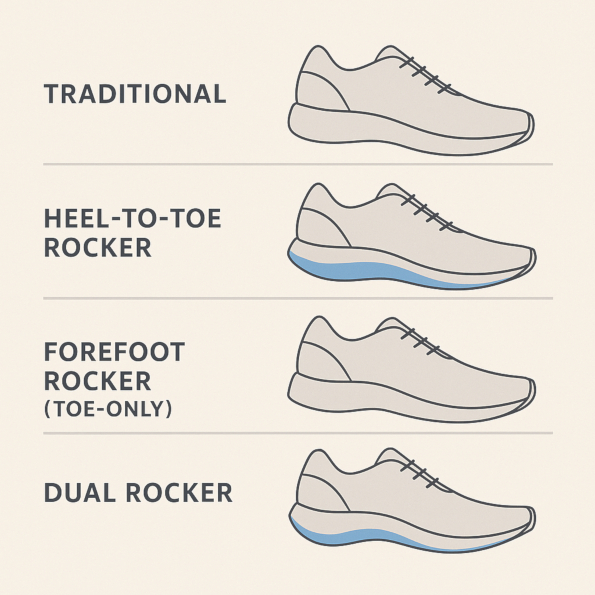
What Are Rocker Bottom Shoes?
So, you put on your new running shoes and suddenly it feels like they are giving you a bit of a push. That’s basically what rocker bottom shoes are about. That funky curved sole is not just for show. These shoes do the heavy lifting for your joints and muscles, rolling your foot along from heel to toe so you don’t have to work hard. You may not like the silhouette at first, but once you take them for a ride, you get why people swear by them.
The Anatomy of a Rocker Sole
A rocker bottom sole isn’t just thick for the sake of looking like a platform sneaker from a ’90s boy band reunion. Its signature feature is a curved profile that changes how your foot moves through the gait cycle. Instead of flexing through the forefoot like traditional running shoes, rocker soles guide your foot in a rolling motion, kind of like you’re pushing a wheelbarrow made of foam.
Types of Rocker Bottom Soles
Not all rockers roll the same way. Here are the main types:
- Heel-to-Toe Rocker: This feature is common in modern running shoes. Honestly, you can’t swing a pair of sneakers without hitting a heel-to-toe rocker. The curve starts at your heel and rolls all the way to your toes, kinda like your foot’s on a mini rollercoaster. Takes the heat off your ankle and forefoot, perfect if you’re logging long miles or your joints feel like they’ve seen better days.
- Forefoot Rocker (aka Toe-Only): Here, the curve kicks in just behind the ball of your foot and pops up at the toes. If your metatarsals are screaming every time you run, this might be your jam. It’s like giving the front of your foot a little vacation.
- Heel Rocker: All the action’s back at the heel with this one. It softens the landing if you’re a hardcore heel-striker, or if your ankles just refuse to bend. Not super common in shoes built for speed, but a lifesaver if your heels or ankles are acting up.
- Double Rocker (Dual Rocker): Now we’re getting fancy. Curved at both the heel and the toe, but the middle stays pretty chill. Picture your foot on a gentle rocking chair, only way less creaky and much faster.
How Do Rocker Bottom Shoes Differ from Traditional Running Shoes?
Here’s the deal with old-school running shoes: they’re mostly about letting your foot do its thing. We’re talking deep flex grooves, barely any extra cushion, and pretty much a flat bottom. The idea? Your toes, along with all the small muscles in your feet, must engage and take on the significant effort. If you’ve got a solid, efficient stride, these are amazing.
In contrast to traditional shoes, rocker bottom shoes:
- Have thicker midsoles (often max-cushion)
- Feature a curved forefoot and/or heel
- Offer reduced flexibility, especially in the forefoot
- Encourage a rolling motion over a pushing motion
So, picture this: your foot’s chillin’, barely breaking a sweat, while the shoe’s out here flexing like, “Relax, I got your back (well, your sole).”

How Do Rocker Bottom Shoes Work?
Rocker bottoms are basically like a moving walkway for your feet—think airport, but less socially spicy. That signature curve? It’s the real MVP. As you walk, it basically rocks you from your heel to your toes, easy-peasy, buttery smooth. Here’s the play-by-play: first, your heel hits the ground, the rounded heel soaks up the shock and nudges you forward. Then, as you’re about to lift off, that curved toe bit steps in, doing the grunt work so your toes don’t have to.
It’s almost like your shoes are whispering, “Hey, don’t sweat the details. Just try not to eat it on that uneven sidewalk.”
Pressure Relief & Joint Impact
Rocker soles are excellent at easing pressure on the forefoot, especially for runners dealing with forefoot pain and tired toes. The key concept is to replace lost motion in stiff joints by enabling smoother transitions from heel to toe without requiring much from your toes.
Imagine just skipping the whole toe-bending thing; it’s like your foot hired a tiny rolling pin to do the hard part. Suddenly, your forefoot gets a break, and your ankle and calf aren’t working overtime either. Pretty sweet deal, honestly.
Now, to be fair, that smooth ride has to go somewhere; it redirects a bit of impact up the chain to your knees and hips. That sounds ominous than it usually is. The truth is, research still hasn’t reached a verdict on whether rocker bottom shoes actually hinder those joints. Honestly, if a shoe designed as a healing tool ends up confusing your knee and hip biomechanics instead… well, that’s just awkward.
In our experience, even stability shoes with stiffer midsoles and rocker soles don’t beat up your knees or hips even at the last mile, when your legs are bargaining for a rest stop and your playlist is stuck on motivational quotes.
Effects on Stride, Muscle Use & Efficiency
- Stride Length & Cadence: So, here’s the deal—rocker soles kinda stretch out your stride a bit and your cadence drops, ‘cause your foot’s loafing with purpose on the ground longer while you roll forward.
- Calf & Achilles Activation: Since the shoe’s doing half the rolling for you, your calves might clock out early. Less strain, sure, but your muscles could get a little lazy if you’re always in these.
- Energy Efficiency: For folks dealing with pain or stiff joints, these shoes can feel like a cheat code, smooth and efficient. But if you’re used to blasting off your toes, you might feel like you’re running with the parking brake on. Lately, though, shoe tech is catching up; some new models don’t feel nearly as awkward.
Gait Mechanics: Changing the Way You Run
Expect to land a little flatter, push less off your toes, maybe fire up some different muscles. That’s awesome if you’re coming back from an injury or want extra cushion, but for hardcore runners? It may feel like your body’s driving itself and you’re just along for the ride.
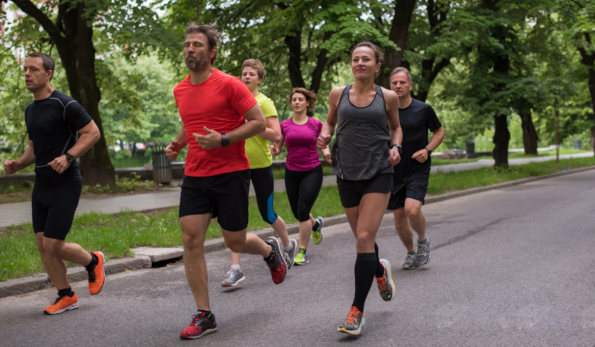
Who Benefits Most from Rocker Bottom Shoes?
Rocker bottom shoes—okay, yeah, they look a little trendy, but who cares when your feet feel like they’re catching a break for once? Seriously, if you finish every run feeling like your joints are auditioning for a fear festival for your feet, these kicks are pretty much a life hack with extra flair. They’re a total game-changer, especially if your ankles move about as much as a stubborn mule.
Runners with Forefoot Pain
Got forefoot pain? Rocker soles reduce pressure on the ball of the foot by shifting the workload away from your forefoot. The curved design lets your shoe do the toe-off, so your actual toes can chill safely inside the toe box, sipping metaphorical piña coladas while you’re logging miles.
Runners with Limited Ankle Mobility
Whether your ankles are stiff because of an old injury, that curved sole does a lot of the heavy lifting. You don’t have to bend your ankle all the way when you push off, so you skip a lot of the weird limping and awkward shuffling. It’s just… smoother.
Heavier Runners
If you’re carrying a bit more body weight, rocker shoes offer extra cushioning and impact dispersion. The thick midsoles and rolling motion soften each step, helping protect your joints and feet from the repeated pounding of longer runs.
Consider them as shock absorbers for your legs, without the repair costs.
Long-Distance & Recovery-Focused Runners
For high-mileage warriors and runners on recovery days, rocker soles shine. They smooth out transitions, reduce muscle fatigue, and promote better posture and stride consistency when you’re too tired to care about “form.”
Perfect for those “I just need to survive this run” kind of days.
Older Runners or Those Returning from Injury
If you’re over 50 or shaking the dust off your running shoes after an injury, you don’t need a sneaker that’s gonna fight you every step. Rocker bottom shoes are absolute game-changers. They don’t just cushion your feet, they practically do half the work for you. Less pounding, less groaning, more “hey, maybe I can actually keep up with the grandkids” vibes. Who says you can’t jog a 5K and still have feet that don’t hate you?
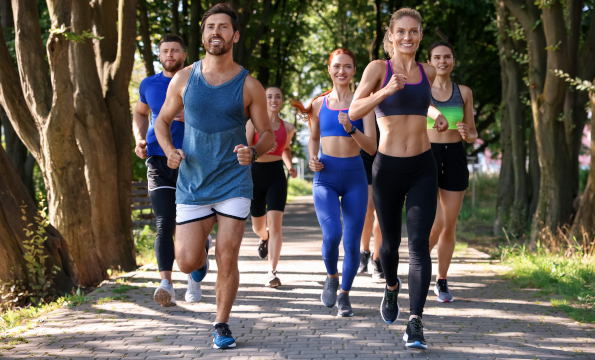
Who Should Be Cautious?
Rocker bottom shoes are like putting your feet in autopilot mode… if autopilot sometimes randomly veers off into a ditch. For some folks, these shoes glide along as smooth as butter, but for others? It’s more like you strapped rollerblades to a shopping cart. Wobbly, unpredictable, and yeah, kinda bizarre. Here’s who should think twice before jumping into the rocker revolution:
Runners with Balance or Proprioception Issues
If your sense of balance already feels like it’s running on a dial-up connection, rocker soles might make things worse. The curved platform can feel unstable, especially when walking slowly, stopping abruptly, or navigating uneven ground.
Think “rocking chair on a tightrope” if you’re not fully tuned into where your feet are.
Runners with a Natural, Efficient Gait
Got a smooth stride that flows like a metronome? Don’t mess with a good thing. Runners with strong gait mechanics may find rocker soles unnecessary or even disruptive. The forced roll can interfere with your natural push-off and make your legs feel like they’re on autopilot… with a slightly delayed GPS.
Translation: If your stride is already poetry in motion, adding a rocker might turn it into interpretive dance.
Minimalist Runners or Fans of Ground Feel
If you’re the type who loves zero-drop shoes, thin soles, or anything that lets you “connect with the earth,” rocker bottom shoes will feel like someone put memory foam between you and your journey. They’re thick, heavily cushioned, and designed to mute ground feedback.
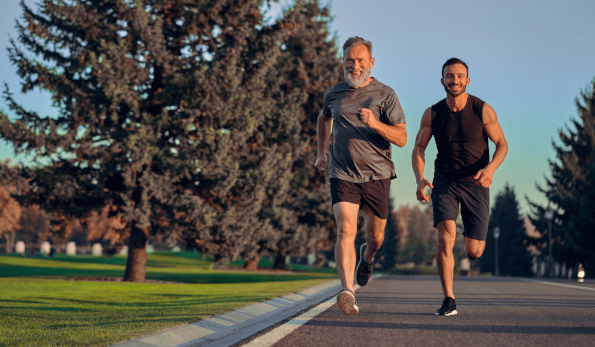
Transitioning to Rocker Bottom Shoes: What to Expect
So, you’ve scored a shiny new pair of rocker bottom shoes. They feel like walking on memory foam dreams, and hey, bonus points if they match your water bottle. But before you lace up and run a half marathon straight out of the box; pump the brakes. These shoes roll differently, literally, and your body needs time to adjust.
Why a Gradual Break-In Is Necessary
Rocker soles shift how your muscles and joints work. They:
- Reduce forefoot flexion
- Change calf and ankle mechanics
- Alter your stride timing and toe-off
In short, you’ll be waking up muscles you didn’t even know were on the payroll, and if you dive in too quickly, they’ll make their presence known. A gradual break-in period lets your body ease into the new motion without the extra soreness, surprise tightness, or an emergency date with your foam roller.
Tips to Prevent Discomfort or Injury
- Listen to your body – Slight soreness is okay. Sharp pain? Time-out.
- Stretch your calves and Achilles – They’re working differently now.
- Don’t retire your old shoes yet – Use them to alternate until you’re fully adapted.
- Avoid speedwork early on – Think “easy cruise,” not “fast and furious.”
- Choose flat, predictable terrain – Save trails and hills for later, once you’re steady.
Rocker bottom shoes might catch you off guard at first, like your feet suddenly decided to moonlight as tiny rocking chairs. The sensation? Wobbly, weird, and kind of wonderful. But give it time. What starts as “What is happening to my stride?” quickly becomes “Why don’t all shoes roll like this?” Let your legs do the talking (and trust me, they will), and maybe hold off on those hill sprints, unless your idea of fun is unintentionally accelerating downhill like a runaway shopping cart.
Rocker Bottom Shoes to Try in 2025
Here are popular daily trainers with rocker bottom soles:
Hoka Clifton 10: The OG Rocker with a Cloud License
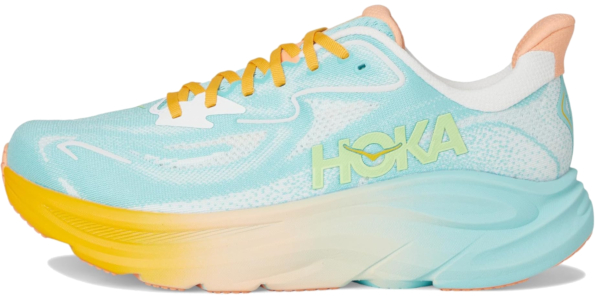
The Hoka Clifton 10 is basically the rock star of rocker bottom shoes, thanks to Hoka, which helped the rocker designs in running shoes gain momentum in 2009. The Clifton is Hoka’s best daily trainer. With its early-stage Meta-Rocker and maxed-out CMEVA cushioning, this shoe doesn’t just encourage forward motion—it practically nudges you into your next step like a coach with a stopwatch.
This edition of the Clifton keeps things light despite a tall stack, giving you soft landings without feeling like you’re lugging pillows on your feet. Whether you’re logging your tenth marathon or just jogging to convince yourself you still own workout clothes, the Clifton 10 has that magical “let’s do one more mile” energy. It’s like running on marshmallows. Silky, plush, and kind of hard to take off once you’ve tried them.
- Weight: 8.8 oz for women and 9.8 oz for men
- Stack Height: 42 mm heel / 34 mm forefoot (8 mm drop)
- Cushioning: Plush CMEVA foam—soft, supportive, and squishier than your favorite couch cushion
- Who it’s for: If you’re a neutral runner who wants to float through your miles, not notice every rock on the sidewalk, and just glide along, this is your jam. Perfect for those endless long runs, lazy recovery days, or those moments you wanna convince yourself jogging is therapeutic instead of, you know, cardio revenge.
ASICS Gel-Nimbus 27: A Cloud with a Curve
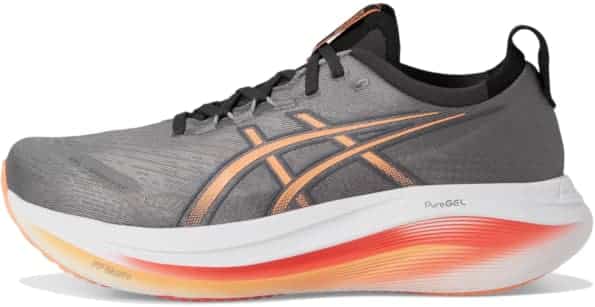
The ASICS Gel-Nimbus 27 isn’t out here flaunting an aggressive rocker profile, but don’t be fooled. It is the most cushioned neutral daily trainer from ASICS. Its gently curved sole pairs with ultra-plush FF BLAST+ ECO cushioning to deliver a ride that’s equal parts soft and structured. You get that signature ASICS stability, but with a modern twist: a heel-to-toe drop that nudges you forward without yelling about it. And the midsole? Think memory foam mattress, if it trained for a triathlon and took recovery seriously.
Featherweight? Not quite. But if your priority is comfort over crushing personal records, the Nimbus 27 has your joints riding first class. It’s the running shoe equivalent of a luxury sedan—smooth, cushioned, and equipped with marshmallow-grade suspension. It’s not out here screaming “speed daredevil,” but every step just sort of sighs, “Ahh, that’s nice.”
- Weight: 9.3 oz for women / 10.8 oz for men
- Stack Height: 43.5 mm heel / 35.5 mm forefoot (8 mm drop)
- Cushioning: FF BLAST+ ECO midsole + PureGEL heel unit = buttery soft landings
- Who it’s for: Neutral runners who want buttery-soft comfort, not some stiff board underfoot. Cushioned enough for those endless runs or just zoning out, letting your mind wander. The rocker? It’s laid-back and understated, effectively plays its role without seeking the spotlight. Honestly, it’s a dream for recovery days, lazy jogs, or if you see running as a sanity break instead of a competition. Forget the finish line; this is for people who just wanna vibe.
Saucony Triumph 23: The Rocker in Disguise
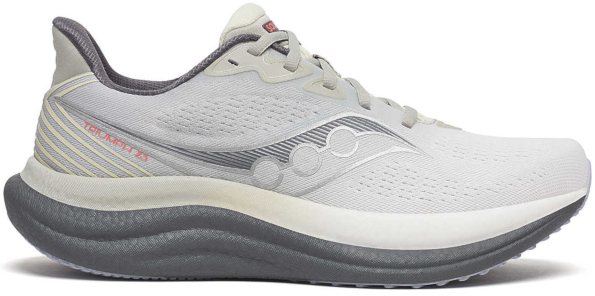
The Saucony Triumph 23 doesn’t flaunt its rocker geometry, but don’t let the clean lines fool you. Under the hood, it’s got a subtle curve that rolls you forward with quiet confidence. The updated PWRRUN PB midsole brings the best of both worlds: plush underfoot comfort with a responsive kick. It’s like running on a memory foam mattress that’s been coached by an Olympic rebounder—soft, supportive, and surprisingly springy.
Thanks to its subtle rocker and tall stack of cushion, the Triumph 23 makes heel-to-toe transitions feel almost automatic, especially during those longer runs when your legs start complaining with upper management (aka your brain). Look, this thing’s all about comfort; no drama, no nonsense. Just pure, cushy goodness for whatever your day throws at you. Need something for easy miles, recovery jogs, or just trying not to piss off your knees? Yup, this is it. Oh, and get this: it’s actually lighter than the last one. So, at least your legs won’t be whining quite as much.
- Weight: 8.4 oz for women / 9.2 oz for men
- Stack Height: 37 mm heel / 27 mm forefoot (10 mm drop)
- Cushioning: Plush PWRRUN PB foam—springy, soft, and quietly supportive
- Who it’s for: If you’re a neutral runner who’s sick of chaos and just wants plush miles, a smooth rocking feel, and zero pressure to blast intervals—welcome home. It’s clutch for racking up big miles, bouncing back after a marathon, or, honestly, pretending you’re not running on fumes and espresso shots.
New Balance Fresh Foam X More v5: The Cruise Ship of Running Shoes
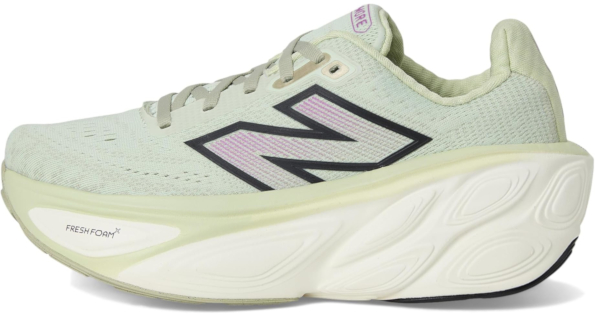
If ultimate comfort needed a spokesperson, the New Balance Fresh Foam X More v5 would step up, probably without even creasing its upper. With an ultra-plush midsole and a clearly defined rocker, this shoe doesn’t just move you forward; it glides you there like a chauffeur in cushioned luxury. Imagine a high-end mattress that got bored with naps and took up distance running. Yeah, this stuff is next-level cushy.
The Fresh Foam X is like sinking your feet into a memory foam mattress, except you’re actually moving, not just napping (though, honestly, it’s tempting). Your legs get that soft, almost marshmallowy vibe, but you’re not wobbling around like a newborn deer. It’s comfy, but not at the expense of stability, so you can go for those endless miles or just shuffle through a chill recovery jog without feeling like you’re on a tightrope. And the wider base? It’s like training wheels for grown-ups; super steady, no sketchy ankle rolls, just pure, pillowy goodness.
- Weight: 8.6 oz for women / 11 oz for men
- Stack Height: 44 mm heel / 40 mm forefoot (4 mm drop)
- Cushioning: Fresh Foam X—plush, balanced, and perfect for soaking up life’s hard pavements
- Who it’s for: Neutral runners who crave that “walking on clouds” magic, folks who want their shoes to roll forward smooth as butter, and anyone who’d rather not feel every single pebble on the sidewalk. Perfect if you’re new to the running grind, power-walking your way through podcasts, or logging marathon-level miles and want your feet to thank you instead of curse you. Basically, every step’s a soft landing, not some weird endurance test.
Nike Invincible 3
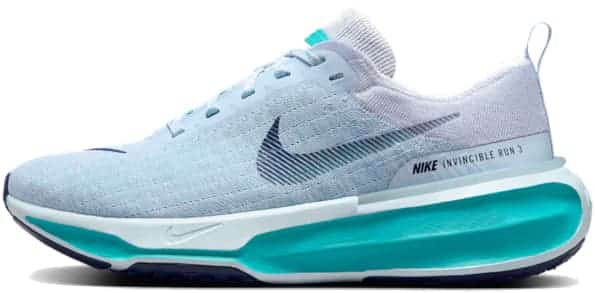
The Nike Invincible 3 isn’t just a daily trainer; it’s a luxury mattress doing cosplay as a running shoe. Thanks to a mountain of ZoomX foam and a gently curved rocker sole, each stride feels like you’re bouncing off a cloud that majored in propulsion. It’s soft and springy, you might start to question whether gravity is still doing its job.
Many runners call this their most comfortable daily trainer, and as true as foam is squishy, I can’t blame them. It’s built for recovery runs, easy miles, or those days when your legs are still ghosting you from yesterday’s workout. That said, all that cushion comes at a cost; this shoe isn’t winning any awards for being featherweight. Think of it as the ultra-comfy hoodie of running shoes: not the lightest thing in your closet, but you reach for it anyway.
- Weight: 9.1 oz for women / 10.9 oz for men
- Stack Height: 40 mm heel / 31 mm forefoot (9 mm drop)
- Cushioning: ZoomX foam—ultra-soft, super bouncy, and scientifically proven to make sidewalks jealous
- Who it’s for: Neutral runners who prioritize comfort over speed. Ideal for recovery runs, daily mileage, or pretending your legs aren’t sore from hill repeats. Just don’t ask it to race; it’s built more for cruise than zoom.
Final Thoughts on Rocker Bottom Shoes
Rocker bottom shoes aren’t magic wands, but for the right runner, they come pretty darn close. If you’re dealing with foot pain, cranky joints, or just craving a smoother, more forgiving ride, these curve-soled wonders can soften the blow and add a little extra flow to your stride. But fair warning: they’re not everyone’s cup of electrolyte drink. If you live for ground feel or love tiptoeing across technical trails, rocker soles might feel less like innovation and more like moon boots with an attitude.
The real trick? Match the shoe to you: your gait, your goals, and what your body’s trying to tell you (even if it’s just groaning). So, are rocker bottom shoes right for you? Possibly! Just don’t dive in with a 10K and hope for the best. Ease into them, give your calves time to stop filing complaints, and let your stride adapt naturally.
Because in the end, it’s not about chasing trends; it’s about chasing comfort, staying injury-free, and maybe, just maybe, finishing your run without cursing at your knees.
Disclosure: This page has affiliate links. When you buy through them, we earn a little something, at zero extra cost to you. Think of it as your way of tipping us for our excellent taste. (This content was created with the help of AI.)
See also:
